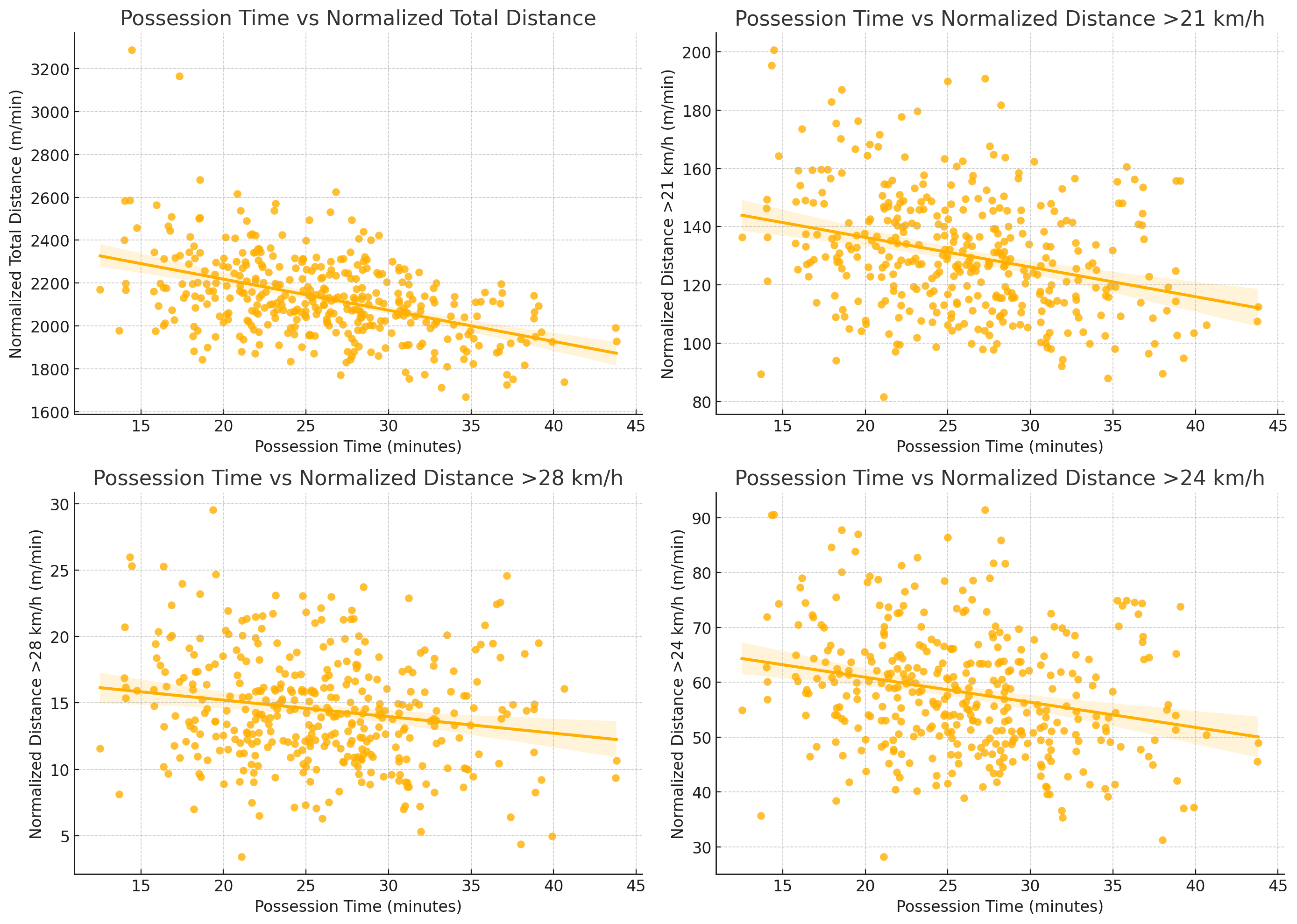
13 Ene The best strategy to avoid fatigue in football: keeping the ball

In professional football, the best strategy to avoid fatigue is keeping the ball. Now, with clear data and evidence, coaches have a new reason to prioritize ball control in every match.
A recent study published by LALIGA, in collaboration with the Football Intelligence & Performance area, shows that maintaining possession for as long as possible is a key strategy to reduce physical effort and keep players fresh (although, of course, this does not always depend solely on the team’s strategy, as the opponent also plays a crucial role and may prevent it). For those who want to delve deeper into the original analysis, the study is available at: https://doi.org/10.1080/24733938.2020.1853211
The research: how possession affects physical effort
The study analyzed thousands of match records from LALIGA, considering both full-season data and detailed match-by-match information. Researchers classified teams into four groups based on their possession time and examined the distances covered by players at different speeds.
The results were conclusive: teams that maintained possession longer covered up to 10% less total distance and performed 12% fewer high-intensity efforts compared to teams with lower possession. This was observed across all field positions but was particularly notable in offensive players, such as midfielders, wingers, and forwards, who significantly reduced their physical load when their team dominated possession.
Moreover, the data from the first half of the 2024/25 season of LALIGA EA Sports confirms this trend. When analyzing match by match, it was observed that the more time a team had the ball, it covered 8% less distance at high speeds (>21 km/h) and performed 15% fewer sprints (>24 km/h and >28 km/h) compared to teams with less possession. These findings support the idea that keeping the ball is not only a tactical strategy but also a way to better manage players’ physical effort.
How can coaches apply these results?
1. Designing specific training sessions
Coaches can use these results to design training sessions that simulate high-possession scenarios. Drills such as extended rondos or possession games in reduced spaces not only improve ball control but also prepare players for controlled efforts, optimizing their performance in match situations.
Practical example: If a team wants to reduce the fatigue of its forwards, it can focus on improving its ability to keep the ball in the opponent’s half, avoiding quick transitions that force players to perform constant sprints.
2. In-match strategies
In high-demand competitions, such as LALIGA EA Sports, where matches are often decided in the final minutes, it is essential to manage physical effort throughout the game. Although the analyzed data does not include specific information about performance in these final minutes, the general trend observed suggests that greater ball control helps reduce fatigue in decisive moments. Coaches can adopt a more conservative approach at certain points in the match, promoting a possession-based game to provide active rest for their players. It would be useful to review whether there are specific data on reducing high-intensity efforts in the final minutes of matches to better support this statement.
Practical example: If a team is leading by a narrow margin in the last 20 minutes, encouraging a passing game in defense and midfield can help avoid excessive fatigue in key players and maintain freshness until the end of the match.
3. Injury prevention
Reducing the number of high-intensity efforts is key to preventing muscle injuries, especially in competitions with tight schedules. Although the provided data mainly focuses on distances covered rather than injuries, the observed trend suggests that a higher possession strategy could help minimize high-physical-demand situations that often lead to injuries.
Practical example: Teams with players prone to muscle injuries could benefit from strategies that prioritize ball control and limit unnecessary explosive efforts.
Key takeaways for coaches
This research clearly shows that keeping the ball is not only an effective strategy from a tactical point of view but also a valuable tool to better manage players’ physical load, reduce fatigue, and prevent injuries. Coaches who adopt a possession-based approach can optimize their teams’ performance and improve their ability to compete in the crucial moments of the season.


